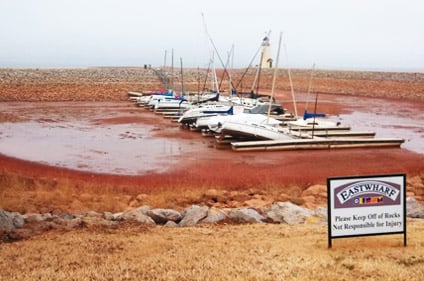Drought in these cases is measured and traditionally categorized into four buckets and a fifth is being further discussed currently. These categories deal with the physical effects to our ecosystem and not just their effects to plant material. The transition from one category or stage to another generally occurs due to time or duration of the drought period.
Meteorological Drought
This classification varies depending on climate but includes considerations of length of time without rain and departure from typical measurable rainfall. Factors included are:
- Precipitation deficiency.
- High temperature, winds, and sunshine with lower humidity and cloud cover.
- Reduced runoff and infiltration with failure to recharge ground water sources.
- Increased evapotranspiration.
Agricultural Drought
This condition links Meteorological Drought with soil water deficits and reduced ground water or reservoir levels. More drought-sensitive plant material may struggle or fail to perform in these ways:
- Realized soil water deficiency.
- Plant water stress – reduced biomass and yield.
Hydrological Drought
Severe drought will result and can be recognized in terms of water shed and river basin levels. This scenario may take several months to develop and result in competition for water and bans when the following occurs:
- Reduced streamflow and water into reservoirs, lakes, and ponds.
- Reduced wetlands and wildlife habitats.
Socioeconomic Drought
Circumstances may affect the supply of economic goods including fish, water, and hydroelectric power. Impacts can be felt on economic, social, and environmental levels:
- Water supply may be insufficient to meet human needs.
- For example, in 1988 and 1989 in Uruguay, drought reduced streamflow impacted hydroelectric power.
Science for Nature and People PARTNERSHIP (SNAPP) has defined and created framework around ecological drought. This model includes insight on:
- How drought exposure and vulnerability is controlled by human and natural processes.
- How ecological drought impacts human communities.
- Determining preparedness strategies for the future.
Although this is a complex topic, the future of the landscape and irrigation industries hinge on how we approach drought today and tomorrow. The irrigation industry is consistently striving towards water saving technologies while the chemical manufacturers are working on water saving strategies and products to promote plant healthcare.
Many areas of the country experience drought routinely and have diverted their landscape to those areas which require less water for maintenance.
For instance, since the release of the drought monitor in 2000, Oklahoma has endured a drought lasting 239 weeks from 11/2/2010 to 5/26/2015. The pictures here are from Lake Hefner in Oklahoma City from February of 2013.
Please contact the Ewing Technical Services Team with any questions, ideas for future topics, weed identification, and more.




